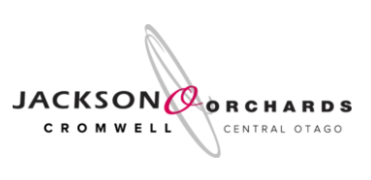Sheep farmers frustrated by need to prove wool's nature
Tracie Barrett
27 July 2023, 6:00 PM
 The cost of shearing sheep has continued to rise as the value of the fleece at farm gate declines. PHOTO: The Central App
The cost of shearing sheep has continued to rise as the value of the fleece at farm gate declines. PHOTO: The Central AppA Maniototo farmer says sheep farmers are frustrated by the need to prove the fundamentals of wool as a product, with the economics of raising sheep for wool continuing to decrease.
Penvose Farms owner Stu Duncan was commenting on the Ministry of Education's decision to fit out hundreds of rural schools with US-made nylon carpet.
Wools of New Zealand, a farmer-owned company that Penvose is a member of, bid for the contract with a wool floor tile that the Ministry for Primary Industries (MPI) helped fund the development of, but did not yet have the credentials to prove the tiles’ sustainability.
“That’s quite alarming really,” Stu said.
“New Zealand has had a sustainable product in wool for 150 years and some academic has decided it’s not good enough. You would have thought the fundamentals of wool would have been well known.”
Geraldine farmer Angela Blair started a petition calling on the government to use NZ wool carpets rather than the US nylon product, citing both economic and environmental advantages. As of Thursday (July 28) morning, the petition had received more than 3,700 signatures.
“I’ve been around wool my whole life and it’s such a fantastic and versatile product,” she said. “You get rid of your wool carpet at the end of its lifetime and it decomposes.”
In contrast, Angela said, nylon was made from crude oil - a fossil fuel - and burned hot and fast like crude oil also. Some nylon carpets had fire-resistant chemicals added but that meant school children would get to sit on a cocktail of oil and chemicals five days a week.
“Essentially we are commissioning 800 schools’ worth of plastic carpeting to be made. Recycling it is all well and good but it doesn’t take it out of commission, it’s still in the world.”
One of the schools that will be getting the nylon carpet tiles is Poolburn School in the Maniototo and principal Melissa Gare said the rural school would obviously prefer to have wool but it was not their call.
“A lot of times these decisions are not ours to make,” she said.
Sam Fowler, Ministry of Education head of property, infrastructure and digital, told the Central App that schools had the option to use other capital funding they receive for property improvements to fully fund the installation of carpets of their choice outside of the ministry programme.
“The tender pricing for 230,000 square metres of the successful tenderer’s product is around $7-8M,” he said. “The equivalent tender pricing for the wool tile was substantially more expensive.”
“In the wool carpet tile offered, only the pile is made of wool yarn. All submissions we received for this tender, including the wool carpet tile option, had a significant proportion of synthetic material with most of the carpet tile’s mass being a synthetic backing."
Wools of New Zealand chief executive John McWhirter said the company was set up by farmers for farmers to improve prices at the farm gate.
In the mid-1990s, wool carpet accounted for 95 per cent of NZ carpet sales, he said, but two years ago, that had reduced to only 14 per cent.
In an effort to raise that percentage, Wools NZ partnered with MPI in Project WOW - Walk on Wool, to create a sustainable wool carpet tile. That had been achieved, but empirical data proving the product’s sustainability took 12 months to gather and collate, so was not available when the Ministry of Education put the school carpet contract out to tender.
“We did bid for it but we didn’t have the data to support the credentials of this product so we didn’t get far,” John said.
“We are already selling our tiles into offices, into one of New Zealand’s largest banks, we have our tiles going into government offices, going into classrooms for new builds. We have tiles going into rest homes.”
One of many advantages of wool was its fire-retardant nature, he said.
“We know we exceed the fire requirements by four times the standard. Wool by its nature self-extinguishes.
“The future is bright because Wools of New Zealand will meet the requirements. It was just unfortunate in terms of timing.”
Whether that happens quickly enough for sheep farmers is yet to be seen, with Stu saying that Penvose’s wool income had gone down by $120,000 in a year while shearing costs had increased by $40,000.
“The accountants are saying that wool is really just a byproduct,” he said. “If the wool cheque doubled, it still wouldn’t be enough compared to other stock.”
Paying more to shear wool than a farmer was paid for the fleece would lead to fewer sheep being farmed, which could see more environmental degradation by other stock, Stu said.
“It’s nearly $10 to shear a sheep,” he said. “We are in a really tricky spot in agriculture.
“It’s really frustrating for farmers. Do we stick with wool or do we turn to other livestock?”

NEWS
JOBS








